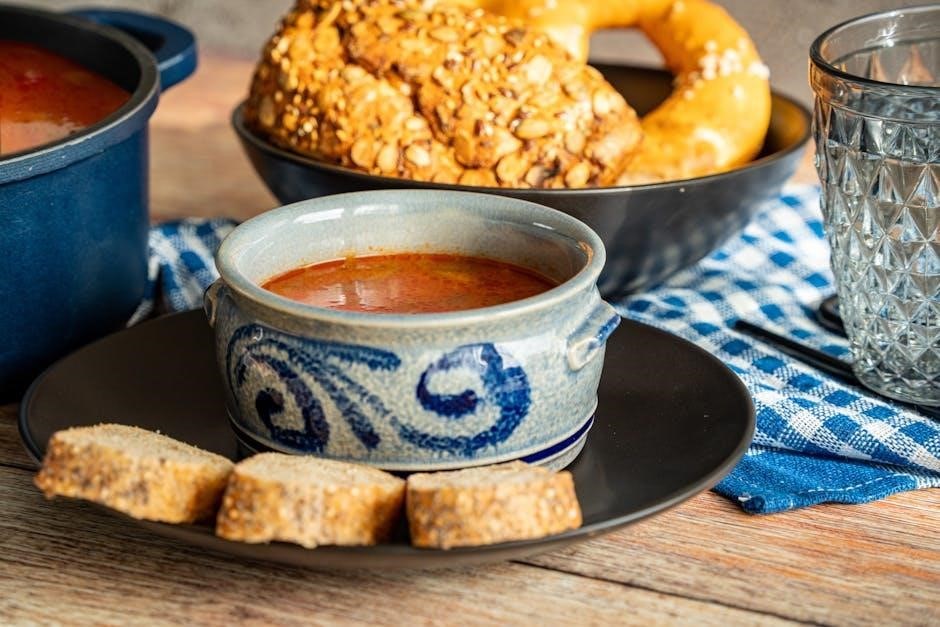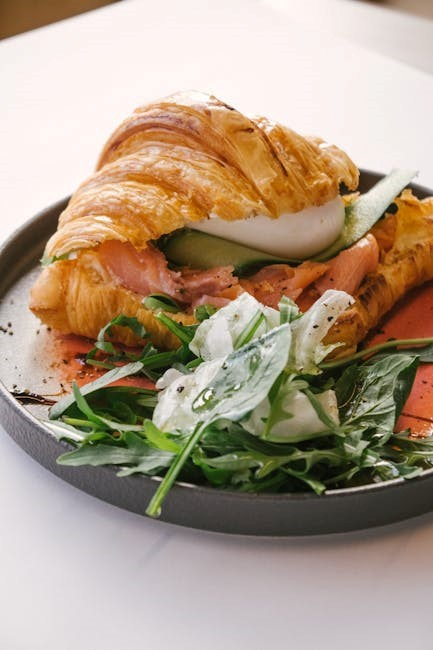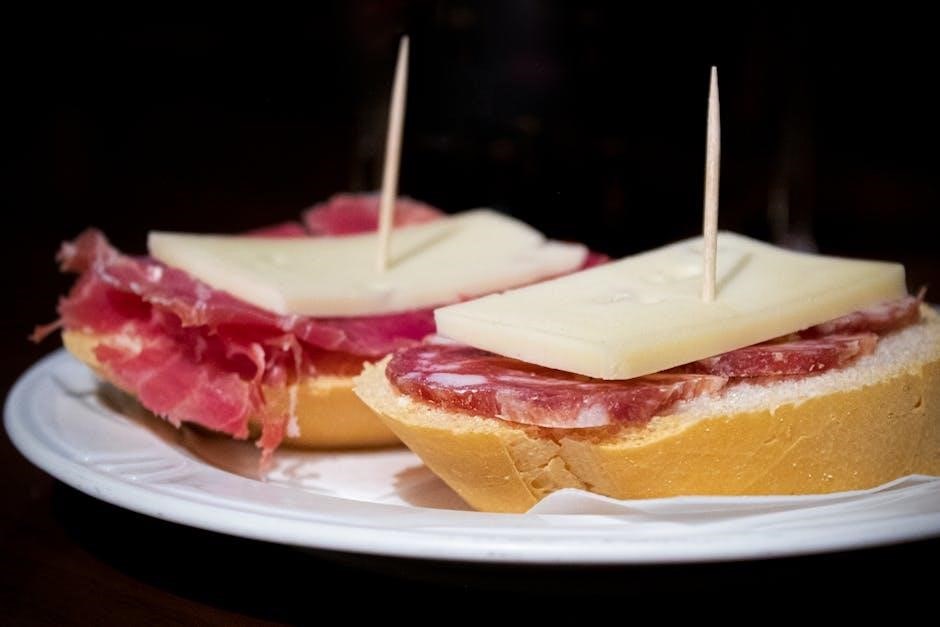Cooking Cumberland Gap ham requires attention to detail and proper techniques to achieve delicious results, using a meat thermometer is essential for food safety, ensuring a perfect dish every time always․
Cooking Times for Cumberland Gap Ham
The cooking time for Cumberland Gap ham is crucial to ensure it is cooked to perfection․
A general rule of thumb is to cook the ham for about 15 to 18 minutes per pound for bone-in hams․
For boneless hams, the cooking time is slightly shorter, ranging from 12 to 15 minutes per pound․
It is essential to consider the size and type of ham when determining the cooking time․
A meat thermometer can be used to check the internal temperature of the ham, ensuring it reaches a safe minimum internal temperature․
The cooking time may vary depending on the oven temperature and the type of ham․
It is recommended to consult the packaging instructions or a reliable recipe for specific cooking times․
By following the recommended cooking times, you can achieve a delicious and tender Cumberland Gap ham․
Proper cooking times are vital to prevent overcooking or undercooking the ham․
Always prioritize food safety when cooking Cumberland Gap ham․
Importance of Ham Size and Type
The size and type of Cumberland Gap ham are critical factors to consider when planning a meal․
Choosing the right size of ham depends on the number of guests and the desired amount of leftovers․
A larger ham may be necessary for a big gathering, while a smaller ham is suitable for a more intimate dinner․
The type of ham, whether boneless or bone-in, also affects the cooking time and method․
Bone-in hams tend to be more flavorful, while boneless hams are easier to slice and serve․
Selecting the ideal ham size and type ensures that the dish is well-received by guests and meets their expectations․
Considering the size and type of ham helps to create a memorable and enjoyable dining experience․
It is essential to select a ham that fits the occasion and the number of guests to guarantee a successful meal․
The right ham size and type can make a significant difference in the overall quality of the dish․

Preparation of Cumberland Gap Ham
Proper preparation is key to cooking a delicious Cumberland Gap ham, involving several steps to enhance flavor always using a standard procedure․
Removing Packaging and Scoring the Ham
Removing the packaging from the Cumberland Gap ham is the first step in preparing it for cooking, this involves taking off any plastic wrap or netting that may be covering the ham․
The next step is to score the ham, this is done by making shallow cuts in a diamond pattern on the surface of the ham, this helps to create a glaze on the ham as it cooks․
A sharp knife should be used to score the ham, and the cuts should be about one quarter of an inch deep, this will help the glaze to penetrate the meat and add flavor․
Scoring the ham also helps to create a visually appealing presentation, as the glaze will fill in the cuts and create a nice brown color․
Overall, removing the packaging and scoring the ham are important steps in preparing a delicious Cumberland Gap ham․
Preheating the Oven and Placing the Ham
Preheating the oven to the correct temperature is crucial for cooking a Cumberland Gap ham, the oven should be set to 325F․
The ham should be placed in a roasting pan, fat side up, to ensure even cooking and to prevent the ham from drying out․
A roasting pan with a rack is ideal, as it allows air to circulate under the ham and promotes even cooking․
The ham should be placed in the center of the oven to ensure consistent heat distribution․
By following these steps, you can ensure that your Cumberland Gap ham is cooked to perfection, with a crispy exterior and a juicy interior․
Proper oven temperature and ham placement are essential for a delicious and memorable dining experience, and will make your Cumberland Gap ham a hit with your guests․

Cooking Methods for Cumberland Gap Ham
Cooking methods include oven baking and slow cooking, yielding delicious results always perfectly․
Oven Baked Cumberland Gap Ham
Oven baking is a classic method for cooking Cumberland Gap ham, resulting in a beautiful mahogany glaze on the exterior and a fully cooked interior․
To achieve this, preheat the oven to 325F and place the ham in a roasting pan, fat side up․
The dry heat of the oven helps to develop the glaze and cook the ham evenly․
This method is simple and requires minimal effort, making it a great option for special occasions․
The oven baked method allows for a crispy exterior and a juicy interior, making it a popular choice for cooking Cumberland Gap ham․
With proper cooking times and temperatures, the result is a delicious and impressive dish that is sure to please․
The oven baked method is a great way to cook Cumberland Gap ham, and with a few simple steps, you can achieve a perfectly cooked ham․
Slow Cooker Instructions for Cumberland Gap Ham
Using a slow cooker is a convenient method for cooking Cumberland Gap ham, allowing for hands-off cooking and a tender result․
To cook the ham in a slow cooker, place it in the cooker and add broth to cover the bottom․
In a small bowl, combine sugar, honey, and mustard to create a glaze, and brush it all over the ham․
The slow cooker method is ideal for cooking the ham low and slow, resulting in a fall-apart texture and a rich flavor․
This method is perfect for busy days or special occasions, as it requires minimal effort and attention․
The slow cooker instructions for Cumberland Gap ham are easy to follow and result in a deliciously cooked ham․
With the slow cooker method, you can achieve a perfectly cooked ham with minimal effort, making it a great option for any occasion․

Food Safety and Temperature Control
Proper temperature control is crucial for food safety, ensuring the ham reaches a safe internal temperature of 160 degrees Fahrenheit always during cooking․
Using a Meat Thermometer to Check Internal Temperature
Using a meat thermometer is essential to ensure the Cumberland Gap ham is cooked to a safe internal temperature․ The thermometer should be inserted into the thickest part of the ham, avoiding any fat or bone․ This will give an accurate reading of the internal temperature, which should reach 160 degrees Fahrenheit․ It is crucial to use a meat thermometer, as it is the most reliable way to check the internal temperature of the ham․ By using a meat thermometer, you can be sure that your Cumberland Gap ham is cooked to a safe temperature, reducing the risk of foodborne illness․ Proper use of a meat thermometer is a simple step that can make a big difference in the safety and quality of your cooked ham․ It is a good practice to always use a meat thermometer when cooking ham․

and Special Occasions
Cumberland Gap ham is perfect for special occasions, serving guests with a delicious and memorable dish always, using proper cooking techniques and presentation methods effectively․
Preparing and Cooking a Cumberland Gap Semi-Boneless Ham for Guests
Preparing a Cumberland Gap semi-boneless ham for guests can be a great way to impress them with a delicious meal․ To start, select a ham that is appropriate for the number of guests, considering the size and type of ham․ A semi-boneless ham is a good option as it is easier to carve and serve․ When cooking the ham, make sure to follow the recommended cooking times and temperatures to ensure food safety․ Use a meat thermometer to check the internal temperature of the ham, which should reach 160F․ With proper cooking and presentation, a Cumberland Gap semi-boneless ham can be a memorable and enjoyable dish for any special occasion, and can be served with a variety of sides and glazes to enhance the flavor and appearance․ This will make the meal more enjoyable for the guests․

Be First to Comment